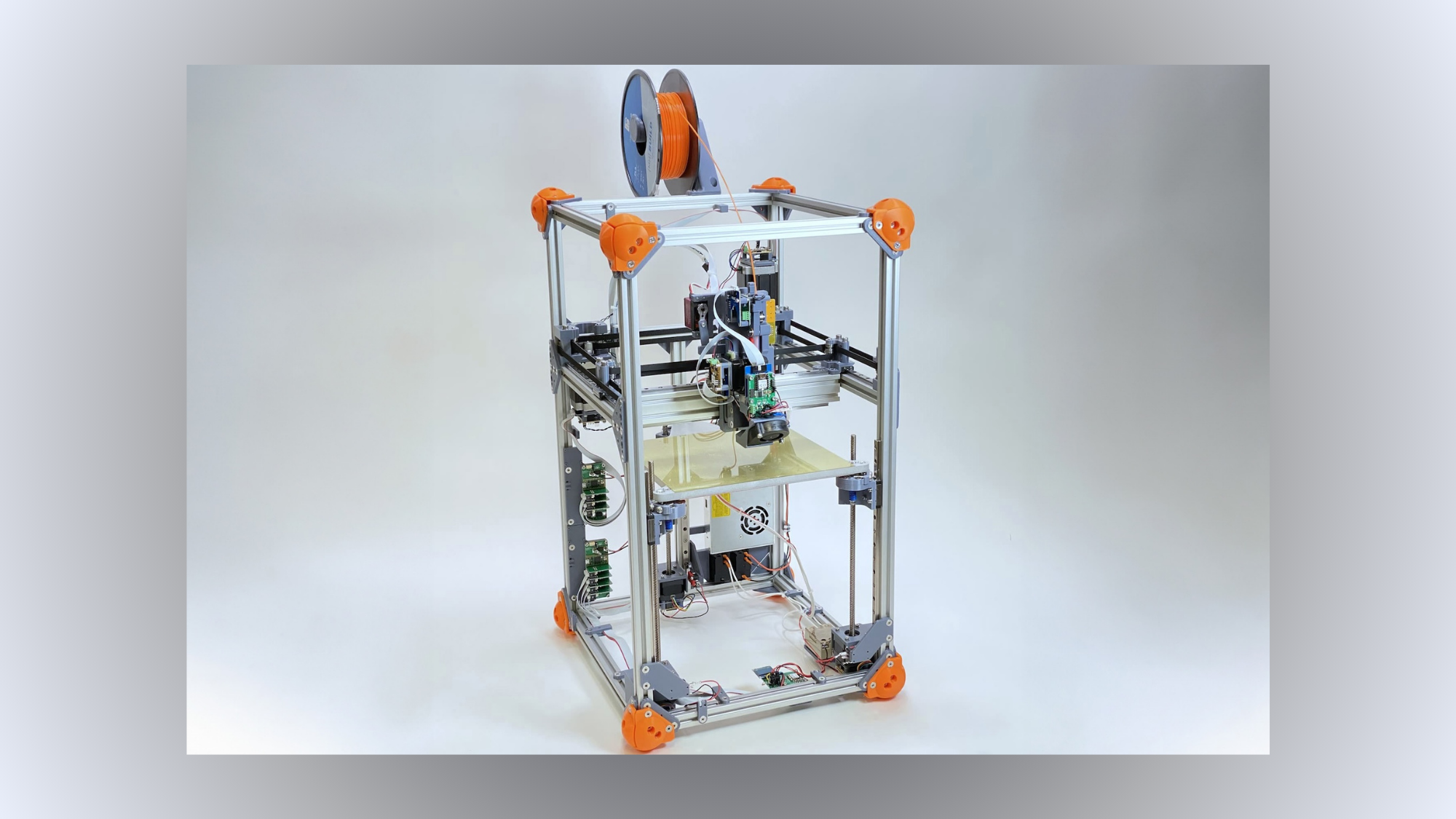A group of worldwide researchers have developed an adaptation to probably assist with 3D printing’s polymer drawback.
For fast prototyping jobs, designers typically flip to fused filament fabrication (FFF) 3D printers. In these machines, molten polymers are layered atop each other utilizing a heated nozzle. This course of is underpinned by what’s referred to as slicer software program, which informs the system of all of the little particulars like temperature, pace, and circulation essential to make a particular desired product, as a substitute of an amorphous blob of congealed goo. However a slicer solely works for a reliably uniform materials—that wouldn’t be an excessive amount of of an issue, besides most of these supplies are sometimes unrecyclable plastics.
However due to engineers collaborating between MIT’s Middle for Bits and Atoms (CBA), the US Nationwide Institute of Requirements and Expertise (NIST), and the Nationwide Middle for Scientific Analysis in Greece, a little bit computational fine-tuning can now permit an off-the-shelf system to investigate, regulate, and efficiently make the most of beforehand unrecognizable printing supplies in real-time to create extra eco-friendly merchandise.
3D printers typically depend on unsustainable supplies, however you possibly can’t merely swap out these polymers for probably extra sustainable options. In contrast to synthetic polymers, eco-friendly choices comprise a mixture of numerous components that end in broadly various bodily properties. Plant-based polymers, for instance, can change primarily based on what’s accessible season-to-season, whereas recyclable resins fluctuate relying on its supply supplies. These can nonetheless be used, however a tool’s software program parameters would wish tweaking for each batch. And contemplating how a 3D printer’s programming often comprises as many as 100 adjustable parameters, this makes recyclable workarounds a tough promote.
[Related: A designer 3D printed a working clone of the iconic Mac Plus.]
In a brand new research revealed in Integrating Supplies and Manufacturing Innovation, engineers detailed a newly designed mathematical perform that enables off-the-shelf 3D-printer’s extruder software program to make use of a number of supplies—together with bio-based polymers, plant-derived resins, or different recyclables.
First, researchers took a 3D printer constructed to supply information suggestions whereas it’s working, then outfitted it with three new instruments to measure numerous components comparable to strain, filament thickness, and pace. As soon as put in, the group created a 20-minute check throughout which these devices measured various circulation charges in addition to their related temperatures and pressures. After some trial-and-error, engineers realized the perfect method to this was to set the most popular temperature attainable for a 3D printer’s nozzle, also referred to as a “hotend,” for apparent causes. On this case, the hotend’s most temperature lived as much as the title—290 levels Celsius, or about 554 Fahrenheit. They then set it to extrude filament at a gentle fee, turned off the heater, and let it run.
“It was actually tough to determine find out how to make that check work. Looking for the bounds of the extruder means that you’re going to break the extruder fairly typically when you are testing it,” CBA graduate scholar and research first writer Jake Learn stated in a press release on Monday. “The notion of turning the heater off and simply passively taking measurements was the ‘aha’ second.”
Learn and their collaborators then entered the knowledge gleaned from their check into a brand new mathematical perform that routinely computed workable printing parameters and machine settings relying on materials. As soon as these had been accessible, the group merely entered the parameters into the 3D printer software program and let it run usually.
To check their system, researchers used six completely different supplies to 3D print a small toy tugboat. Even together with eco-friendly choices derived from algae, wooden, and sustainable polylactic acid, engineers reported no “failures of any sort” of their small mannequin vessels—though from an aesthetically standpoint, the wooden and algae resins did make for slightly stringy-looking ultimate merchandise.
However whereas the brand new alterations could not but supply a “full reckoning with all the phenomenology and modeling related to FFF printing,” the group believes the system reveals that “even easy strategies together with instrumented {hardware} and workflows that join machines to slicers can have promising outcomes.”
Subsequent up, researchers hope to develop on their computational modeling efforts, in addition to design a method so testing parameters can routinely apply to a 3D printer as a substitute of requiring guide entry. Within the meantime, they’ve made their mechanical and circuit designs, in addition to firmware, framework, and experiment supply codes accessible on-line for others to attempt for themselves.



